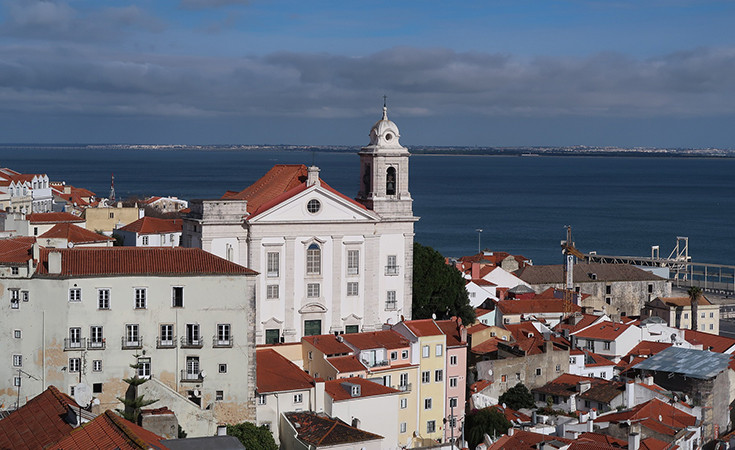
The Church of St. Roque was originally the church of the Jesuit people, and this was one of the first Jesuit churches in the world. It was built in the 16th century and served as such for almost 200 years, until the moment when the Jesuits were expelled from the country. After the earthquake of 1755, the church was taken over by the Holy House of Mercy in Lisbon to replace the church and the head office, which was partially damaged. Of all the buildings that were largely destroyed during the earthquake, the church of St. Roch was relatively preserved.
It was built mainly in the Baroque style with a large number of chapels, of which the chapel of St. John the Baptist from the 18th century is the most significant. It was built of precious stones, in Rome, and was considered the most expensive chapel.
In 1505, Lisbon experienced a plague from which many people died. The plague appeared with a ship from Italy. How dangerous the plague was is shown by the fact that the then royal family was forced to leave Lisbon. Graves for all the people who died of the plague were made in San Roque. Today, this place is known as Bairro Alto. King Maunel I ordered the relic of Saint Roque (protector of the plague victims) to be brought from Venice.
The residents of Lisbon decided to build a sanctuary for the protector of plague victims next to the cemetery, outside the city walls. Construction began in 1506 and was completed in 1515. Bishop Ambrosio consecrated it on May 24, 1527, and in the same period the fraternity of St. Roch aims to take care of the sanctuary. The fraternal community consisted of people from various strata of the population, and this community still exists today. It takes care of the maintenance of the chapel of St. Roch in today's church.
In the 1530s, the Society of Jesus was founded, and in 1540, King John III of Portugal invited the first Jesuits to come to Lisbon. The Jesuits represent the order of Catholic monks. They first settled in the All Saints Hospital, which does not exist today, then Sao Antao College; but the Jesuits soon began to search for a larger place, in order to find a permanent church, and they chose the Sanctuary of St. Roch. Although the church was not given to them immediately, after the agreement, John III ceded the church to the Jesuits, on the condition that a chapel be built for St. Roch in the new building and that he remain the patron saint of the church.
This sanctuary became small for the Jesuits as well, so they began to strive for a new church building, which was to be simple and functional. The first cornerstone was laid in 1555, but the building was expanded in 1565, and still looks like that today. The royal architect Alfonso Alvarez led the works until 1575, and then his nephew continued. Nevertheless, the building was completed by Filipe Terzi, the architect of King Philip II of Spain.
The church is very beautiful, both outside and inside. Gold, marble and paintings make it special. All the chapels within the church are unique. Although it looks simple from the outside, the interior and its design are remarkable, made with a lot of details, and look impressive.
There is a museum inside the church, and the entrance fee is 2.50 euros.
Author of the text:

Maja Glavaš, Bachelor with Honours in Communicology. Works in Tourism.
Contact: [email protected]; instagram: travel_europe1